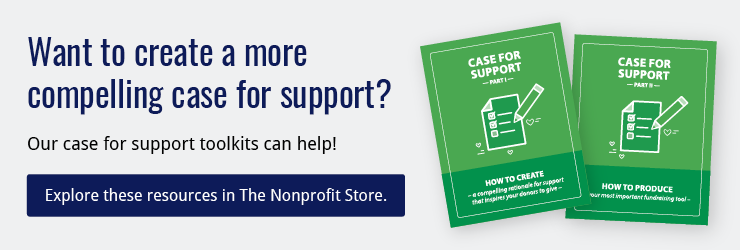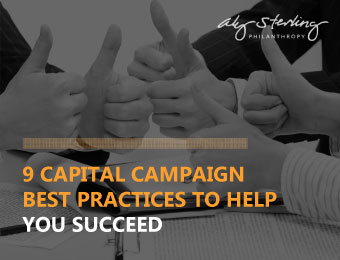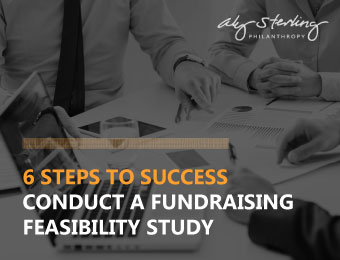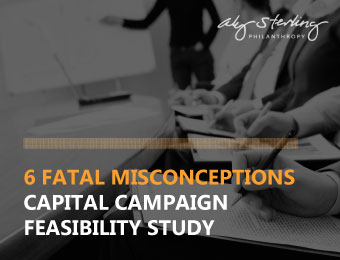Capital Campaigns: The Ultimate Guide
Learn about capital campaigns and how you can plan one.
Capital Campaign Basics
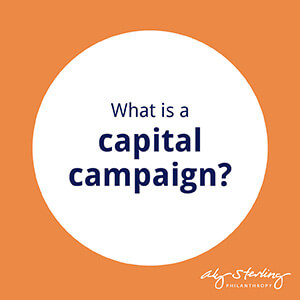
What is a capital campaign?
A capital campaign is an intense effort undertaken by a nonprofit organization to raise a specific dollar amount within a defined period of time. The purpose of a capital campaign is to fund a high-cost strategic initiative such as a capital project.
Because capital campaigns are commonly used to raise funds for tangible projects such as building renovation and construction, their goals often reach into the millions and require multiple years to achieve.
Capital campaigns usually consist of two different phases: the quiet phase and the public phase.
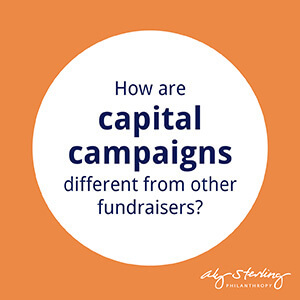
How are capital campaigns different from other fundraising efforts?
Capital campaigns are different from other fundraising efforts for a few key reasons.
They are large, setting big goals for big projects. They last multiple years, from the first planning meeting to dedication of the donor wall.
Finally, they provide opportunities to reach out to potential and current donors in order to engage them or increase their giving. Many nonprofits use capital campaigns as a platform to increase awareness of their mission within the community.
Additionally, capital campaigns are unique because of the distinct phases that dictate when to reach out to specific types of donors.
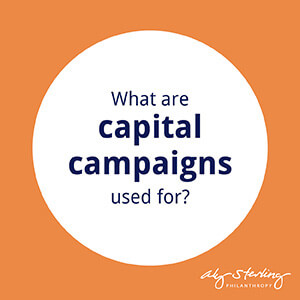
What are capital campaigns used for?
Nonprofits use capital campaigns to fund costly strategic initiatives, usually tangible projects such as building renovations, new construction and the purchase of equipment.
While healthcare and educational institutions often launch the most ambitious projects, any nonprofit can conduct a successful capital campaign with solid planning and execution.
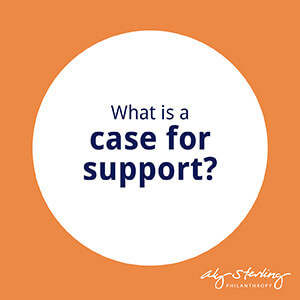
What is a capital campaign’s case for support?
The case for support (also known as the case statement) is the most important tool in your organization’s fundraising toolbox. This is because it provides a clear, concise overview of why your organization exists and why it deserves donor support.
The case for support is even more important during a capital campaign. Nonprofits that clearly articulate their impacts, needs and plans in a donor-centric format are most likely to meet their campaign goals.
Your capital campaign’s case for support must detail your fundraising goal and include specifics about how the money will be used toward specific impacts.
One of the first things you should do when planning a capital campaign is put your case for support in writing. Create a branded case brochure that includes all of the information prospective donors need in a professional, useful package.
Plan a Successful Capital Campaign
Planning a Capital Campaign
Understanding the Capital Campaign Timeline
Phase 1: Feasibility Stage
Your team can determine the viability of a campaign’s fundraising strategy by surveying stakeholders in your organization. A fundraising consultant conducts this study and assesses the results to help your nonprofit get the most from the capital campaign planning process.
Phase 2: Pre-Campaign Planning
The pre-campaign planning phase is when you’ll create your campaign’s strategy and compile a list of major gift prospects. During this phase, you’ll also secure and train your leadership and create a gift range chart outlining the different ranges of donations you’ll need.
Phase 3: Quiet Phase
During the quiet phase, you focus on securing donations from your major gift donors. You’ve reached the end of the quiet phase when you have 50-70% of gifts outlined on your campaign’s gift range chart; this capital campaign phase may take a while to complete.
Phase 4: Kickoff
The kickoff marks the launch of your capital campaign to the general public. After quietly courting donations from your major gift donors, it’s time to make it public! Once you launch your campaign and raise awareness, you can move on to the public phase of the campaign.
Phase 5: Public Phase
With the launch of the campaign, you’ve officially moved on to the public phase! Now is the time to reach out to your entire donor base and the community at large for support. At the end of the public phase, you’ll have reached your goal and can celebrate your success!
Phase 6: Stewardship
As you wrap up the campaign, continue to update donors and thank them for their contributions. Stewardship is an ongoing process. Acknowledge all donors who have supported your campaign and stay connected with them after it’s over to secure returning donors.
Hiring a Capital Campaign Consultant
Why should you hire a consultant?
Capital campaigns are large-scale fundraising efforts, and you don’t have to conduct one on your own.
Hiring a consultant can help ease some of the stress that comes with planning and executing a capital campaign.
A consultant can guide and advise you through every phase of the process from start to finish.
Additionally, a capital campaign consultant can help you conduct a feasibility study and establish a strategy for your campaign.
What kind of help do you need?
Create a list of the areas where you want help and prioritize them. That way, you can find a consultant that meets your needs.
For example, a consultant can:
- Create a fundraising strategy.
- Train your leadership team.
- Write a case for support.
- And much more!
Once you determine your needs and concerns, start your search for the right capital campaign consultant.
What kind of relationship is important to you?
It’s important to think about what kind of relationship you’d like with your consultant.
Do you want someone to help with every step of the process? Or just assist with a few key tasks?
Is it important to have someone nearby who can meet with you in person? Or are you open to working remotely with someone you can trust?
It’s up to you to determine what relationship you want with your consultant and to establish those expectations early on.
Perform a Capital Campaign Feasibility Study
What is a feasibility study?
A feasibility study consists of one-on-one meetings and focus groups to test the potential support for a project. The goals are two fold: to gather feedback and information to guide the project while creating early support and awareness among key parties.
Organizations that perform such studies develop realistic goals and stronger cases for support. As a result, they are more likely to reach – and even exceed – their financial goals.
How do you conduct a feasibility study?
Consider hiring a professional consultant to conduct your feasibility study to elicit more honest opinions from interviewees.
Additionally, you’ll need to choose people to participate that either have a history with your organization or represent the community’s interests. Examples include former board members, key volunteers and local leaders.
A feasibility study can help you answer the following questions:
Do I have a large enough donor base to support my goal?
Does the project make sense and offer a concrete solution?
Do I have the support of my board of directors?
How much should we expect to raise?
Is now the right time to host a capital campaign?
What questions do potential donors have about the project?
Who are potential major gift prospects/campaign leaders?
Capital Campaign Team Members
Board Members
What is their role? Your board members will make sure the campaign stays on budget. To show their support, every member should make a gift to the campaign.
Why are they important? Not only do you need the board’s approval to execute your campaign, but you also need their help to identify major donors and meet with these supporters to secure contributions.
Staff
What is their role? To run a capital campaign, you’ll need the assistance of staff members like your development director and major gifts coordinator. They’ll help with the day-to-day tasks of planning a campaign.
Why are they important? Your staff can bring their expertise to the table and help you out with various parts of the capital campaign.
Volunteers
What is their role? Many of your team members will be volunteers of some sort. Their responsibilities could vary from leading a committee to soliciting gifts.
Why are they important? Volunteers make up the backbone of your capital campaign. They provide you with skills, leadership and the manpower to help your campaign succeed.
Campaign Chair(s)
What is their role? This position may be assigned to a single person or many people to lead different areas of the campaign. Campaign chairs attend monthly meetings and ensure the success of the campaign.
Why are they important? The campaign chairs lead committees and direct your volunteers throughout the campaign.
Planning Committee
What is their role? Typically, this committee will consist of 10 to 15 members including staff and volunteers. They’ll help plan the capital campaign by reviewing your gift range chart, case for support and donor lists.
Why are they important? The planning committee makes sure that everything is in order to move onto the quiet phase.
Steering Committee
What is their role? The steering committee will oversee the campaign once you’re in the quiet phase. There may be some overlap between the steering and planning committees.
Why are they important? The members of the steering committee will be the most effective solicitors and advocates for your capital campaign.
Plan a Successful Capital Campaign
Communications for Capital Campaigns
Capital Campaign Case for Support

Why is a case for support so important?
A case for support is a clear, concise overview of your organization and project, and why they deserve donor support. It’s a persuasive document written to help donors understand how their investment in your organization will be used to make a difference.
Since your statement is for your potential supporters, it needs to be specific and cover all the questions that donors might have about your capital campaign. It should convey a sense of urgency that will help donors understand the importance of your project.
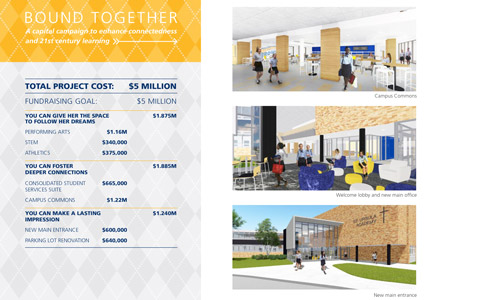
How is a case for support used?
A case for support is used to persuade donors to give and, in written form, can serve as the foundation for all other marketing materials. Your case for support should both inspire supporters to give and clearly outline your fundraising goal, proposed project and plan for implementing the money you raise.
Your case for support can be used in a variety of ways throughout your campaign and even after it. Think of your case for support as a flexible document that you can update on a campaign-by-campaign basis.
Capital Campaign Branding
Why is branding important?
As you are beginning to publicize your organization’s capital campaign to the wider community, think about the way that you want to brand your capital campaign.
Branding your campaign is important because it helps convey your fundraising message and make your capital campaign memorable.
Campaign branding should be included in every part of your capital campaign. This includes your website, online donation forms, any promotional materials and any other materials, whether physical or online.
do you need a Campaign slogan?
Capital campaign slogans (also called taglines) are short, catchy phrases that communicate your campaign’s message. Your slogan should be self-explanatory and memorable.
Having a slogan is important because it will help differentiate the campaign’s purpose from your nonprofit’s other fundraising endeavors.
While your slogan may seem like just a small part of your campaign, it’s essential if you want to raise awareness and quickly explain why you need the funds.
Branding Example: St. Ursula Academy Case for Support
Slogan: “Our Roots, Our Strength, Our Future”
Branding Elements:
- Unified color scheme from St. Ursula Academy
- Hero image featuring a student
- St. Ursula Academy logo
Effect: Anyone who sees this cover page of the St. Ursula Academy case for support will immediately recognize who and what the campaign serves. The capital campaign has a clear tie to the heart of the academy, which can make donations more tangible to prospects.
Capital Campaign Communication Plan
Creating a communication plan is important because it will help you determine how and when you’ll interact with donors. Your communications plan should map out when you solicit donations and how you’ll thank and update donors after they’ve given.
We’ll go over some best practices to use when communicating with donors during the quiet and public phase.
Communications During the Quiet Phase
Plan out your capital campaign and set specific fundraising and communications goals. Your team should know ahead of time when you’ll need to reach out to constituents, update them on the campaign, solicit gifts, and thank supporters.
Prepare your capital campaign website, brand and slogan and case for support. Your communication strategy should establish a clear brand identity for your nonprofit and your upcoming campaign; be sure this is finalized during the quiet phase.
Identify your target audience and message, and brainstorm strategies for how to interact with donors. Communicating with supporters means understanding who you’re trying to reach, so take this time to clearly research your constituency.
Hold in-person meetings with your largest donors to solicit major gifts. The quiet phase is a great opportunity to connect with key prospects you’ll rely on for major gifts. Reach out to these individuals personally and start building a relationship early.
Brainstorm the ways you’d like to promote your campaign to the public. During your campaign’s quiet phase, think of ways you’d like to connect with the public once your campaign officially launches so you have a clear plan in place.
Communications During the Public Phase
Kick off the public phase with an event where you announce your capital campaign to your wider audience. This doesn’t have to be a large scale fundraising event but might be a gala or a live broadcasted social media launch party.
Use a variety of channels — social media, email newsletters, flyers, etc. — to spread the word about your capital campaign. If your nonprofit doesn’t adopt a variety of communications channels, you risk missing out on key supporters!
Create a schedule for when you’ll send out your communications. Develop a communications calendar to stay on top of when your team needs to reach out to prospects, follow up on solicitations, thank donors, and steward additional prospects for giving.
Incorporate your capital campaign’s branding on all your materials. Defining your campaign’s identity is crucial to getting constituents to align with your cause. Be sure that all donation pages and campaign collateral stay on brand and on message.
Other Capital Campaign Marketing Materials
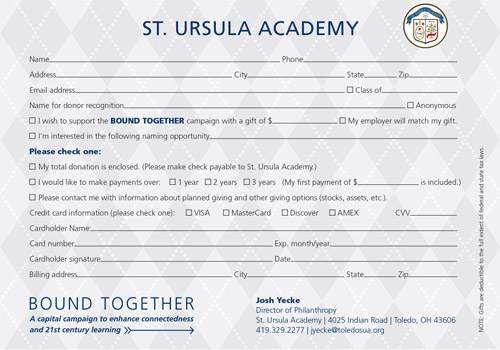
Pledge Cards
What are they for? A pledge card is a small document that you can send to supporters asking for donations. It should briefly explain the campaign and how a supporter can contribute.
What should they include? Your card should match your campaign’s brand and have information on how a donor can give. Include a space for the donor’s name, contact information, donation amount and payment schedule.
Case for support brochures
What are they for? Case for support brochures provide donors with information about your mission, project and capital campaign in a format that is easy to use. You can hand out brochures during your fundraising events or mail them to potential supporters.
What should they include? Case brochures should include an “ask” and provide details about how to give, including contact information. Some brochures include pockets for holding giving envelopes or pledge cards, and some also feature one-page inserts listing giving levels, dedication opportunities and names of campaign leaders.
Website
What is it for? To keep your capital campaign separate from your other fundraising efforts, consider creating a website or a dedicated page just for the campaign. You can send donors directly to your campaign’s website/page to learn more.
What should it include? Your website/page should have information about your project, a form for donors to give online and any event registration. Make sure to include your slogan in a prominent location.
Plan a Successful Capital Campaign
Capital Campaign Best Practices
Create a Gift Range Chart for Your Capital Campaign
What is a gift range chart?
A gift range chart will break down your fundraising goal into smaller parts. It will make reaching your goal more manageable. Additionally, you can show the chart to your board to illustrate how you’ll reach your goal.
How do you create one?
First, break down your gift sizes; the highest gift should make up 10-20% of your goal. Next, add your prospects to the chart and include more than you really need. For example, if you need 2 donors to make the highest gift, reach out to 4 prospects.

Create a Gift Range Chart for Your Capital Campaign
What is a gift range chart? A gift range chart will break down your fundraising goal into smaller parts. Your capital campaign will be made of a few large contributions and many smaller gifts.
Your chart will help guide you and your volunteers make reaching your goal more manageable. Additionally, gift chart is a visual you can show your board to illustrate how you’ll reach such a significant goal.
How do you create one? First, break down your gift sizes; the highest gift should make up 10%-20% of your goal. Next, add your prospects to the chart and include more than you really need. For example, if you need to 2 donors to make the highest gift have 4 prospects that you’ll reach out to.
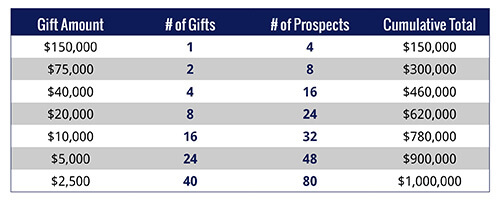
Understand the Different Types of Capital Campaign Donors
Major Gift Donors
Why are they important? The donations made by your major gift donors will make up around 60% of your capital campaign goal.
When will you reach out to them? The quiet phase is when you solicit donations from major gift donors (but they can give anytime!).
How to find them? You can conduct prospect research to find your major gift donors. Prospect research is a process that examines your constituency to find prospects with the capacity to give a major gift.
Regular Contributors
Why are they important? Your regular, or annual, contributors already have a history with your nonprofit. Therefore, you’ll likely have a less difficult time trying to persuade them to give.
When will you reach out to them? You’ll start asking your regular contributors for donations during the public phase.
How to find them? Look for the supporters that have frequently given to your organization’s other fundraising efforts.
First-Time Supporters
Why are they important? These new supporters will likely give because they have a passion for your cause. You’ll have many opportunities to cultivate stronger relationships with them.
When will you reach out to them? The public phase is when you’ll start reaching out to these prospective donors.
How to find them? First-time donors can come to your organization from recommendations or from your campaign’s marketing.
Train Your Volunteers on How to Ask for Capital Campaign Donations
As you train your volunteers and leadership on how to ask for donations, make sure you provide them with the resources they need to make their jobs easier. The more direction you give them—whether it’s their first time asking or not—the more successful they’ll be. Provide your volunteers with resources such as:
A Step-by-Step Guide
Your volunteers are going to be the ones asking for donations. It’s important to make sure that they know how to ask. By creating a step-by-step process, everyone can follow the same procedure. When they have questions, they can refer to the guide.
You may have to create two guides; one each for the quiet and public phases. These guides should be detailed enough to include every step in the solicitation process, including the acknowledgement that happens after a donor gives.
Email & Direct Mail Templates
Along with your step-by-step guide, you should also give volunteers email and direct mail templates to use to reach out to donors. Templates will help ensure your volunteers have the correct information and branding when soliciting gifts. They also make the process faster and easier, showing consideration for your volunteers’ time and effort.
Which examples you decide to provide is up to you. For instance, you can provide an email template for initiating a meeting or a letter template for following up with donors.
Donor FAQs
Make sure your volunteers are familiar with the questions donors may ask before they make their appeals. It makes sense to understand the basic details of the project, and prospective donors will appreciate your volunteers’ ability to confidently reply to their questions with an educated answer.
You can gain these frequently asked questions during your feasibility study and by listening to the questions of volunteers throughout the planning process.
Your Case for Support
Before asking for donations, your volunteers should have a solid understanding of your case for support as this will be the bulk of what they discuss during their appeals. They should understand the need for the project, know how the funds will be spent and be able to convey the urgency that comes with raising these funds.
Since your case for support is one of the first things you complete for your capital campaign, it should be what volunteers focus on before the launch of your quiet phase.
End the Capital Campaign with Donor Stewardship
Send acknowledgement letters
Once a donor gives, it’s important to send them an acknowledgement letter to show your appreciation. When you thank donors, let them know that their contribution is valued and that you appreciate their support.
In your letters, make it personal by addressing the donor by name and mentioning the contribution they made.
offer other ways to get involved
Communication with donors shouldn’t stop after you send them an acknowledgement. Keep the interaction going by offering other ways for donors to get involved in your organization.
While it’s never good to ask for another donation right after they’ve given, you can encourage donors to attend an event or volunteer.
Additional Capital Campaign Resources
Capital Campaign Best Practices
Fundraising Feasibility Study
Plan a Successful Capital Campaign
![]()
Create a bold
PLAN OF ACTION
for your mission.
Get our free resource How to Ask: A Step-by-Step Primer
PO BOX 140668
TOLEDO, OHIO 43614
The Nonprofit Store
Your one-stop-shop for high-quality, affordable DIY tools focused on fundraising, strategic planning and board governance.
News & Resources
Sign up for our email newsletter and receive FREE resources, exclusive tips, news and offers!
Have A Question?
Contact us for more information about our services and how we can help your mission.
THE NONPROFIT STORE
Your one-stop-shop for high-quality, affordable DIY tools focused on fundraising, strategic planning and board governance.
NEWS & RESOURCES
Sign up for our email newsletter and receive FREE resources, exclusive tips, news and offers!
HAVE A QUESTION?
Contact us for more information about our services and how we can help your mission.
